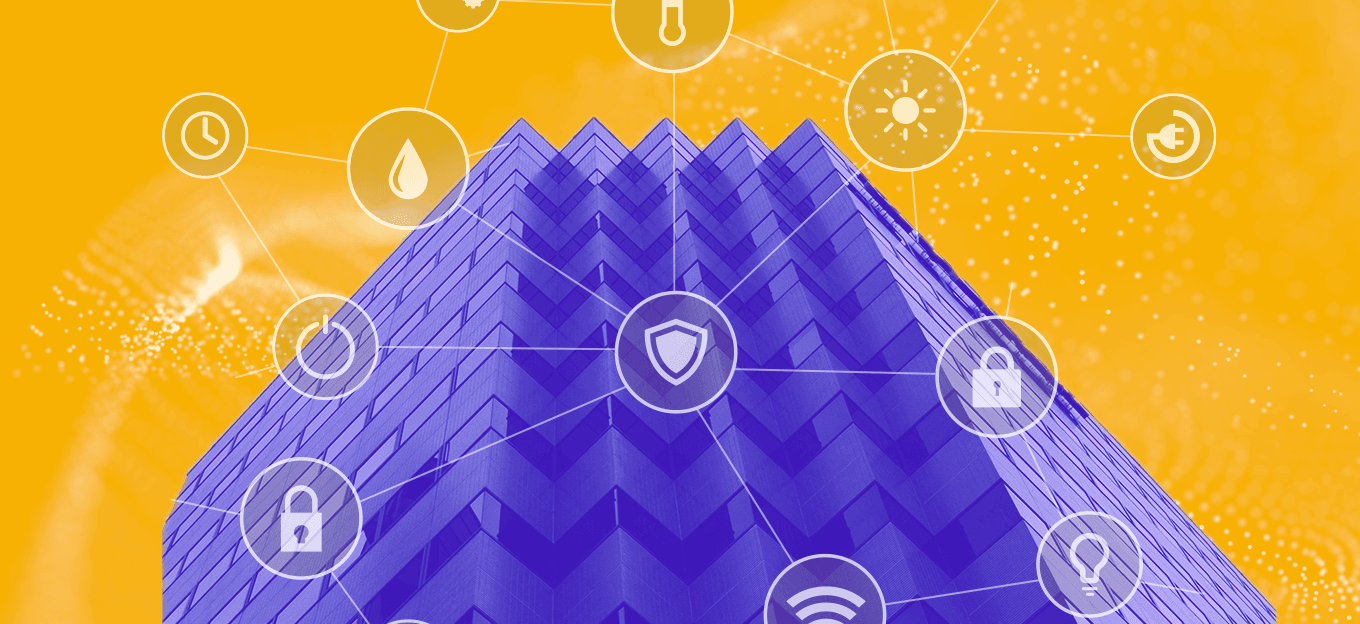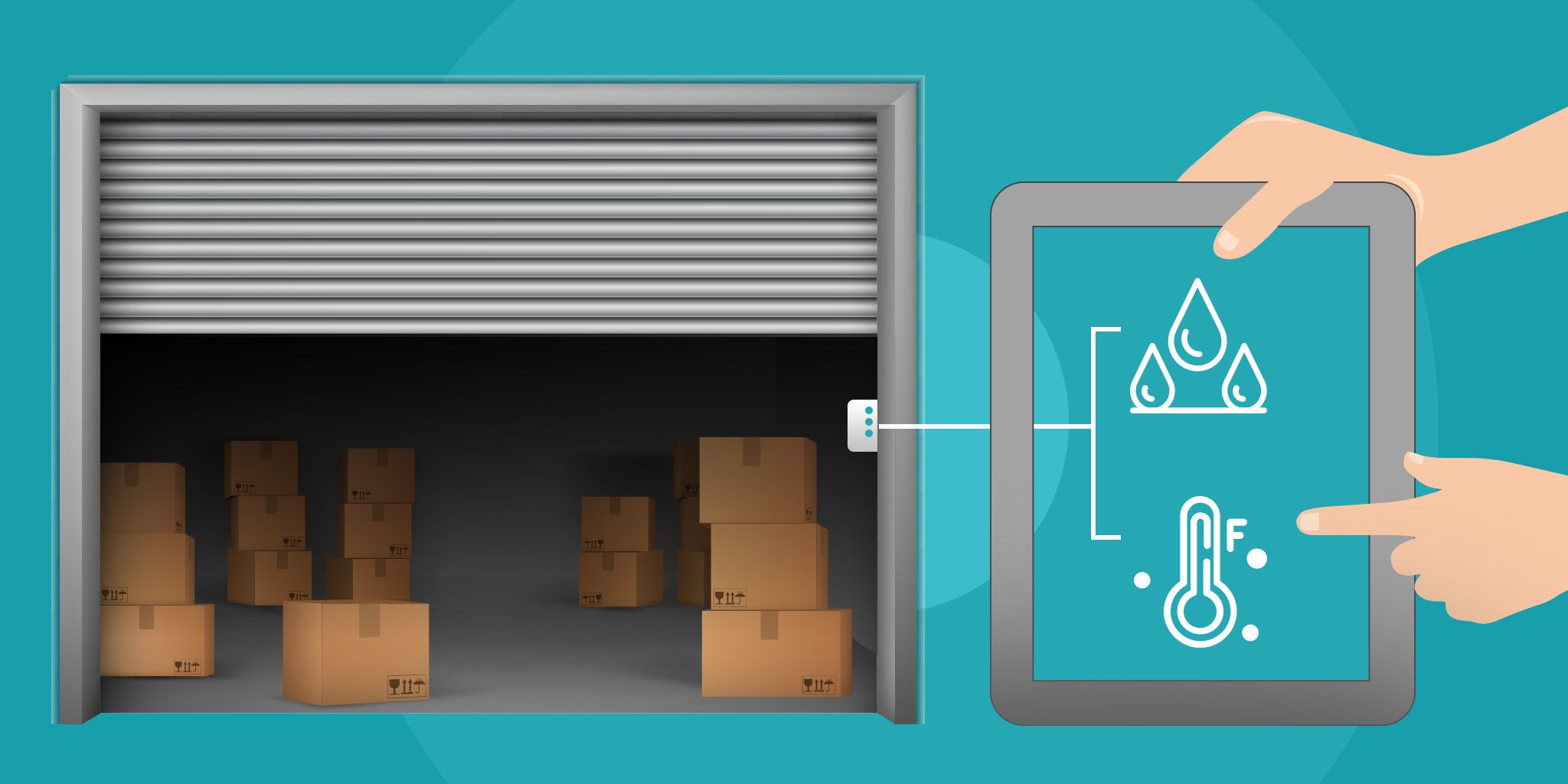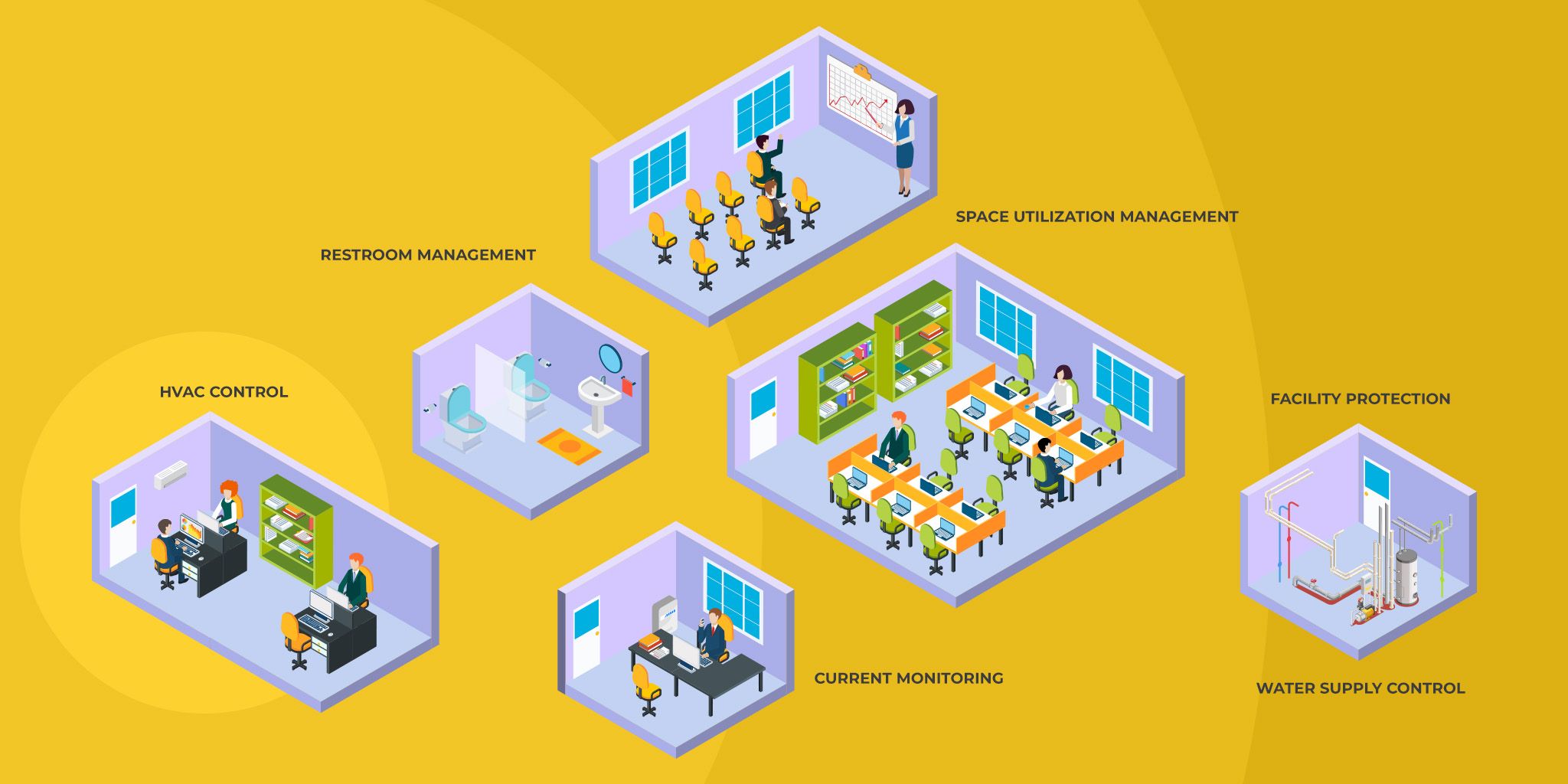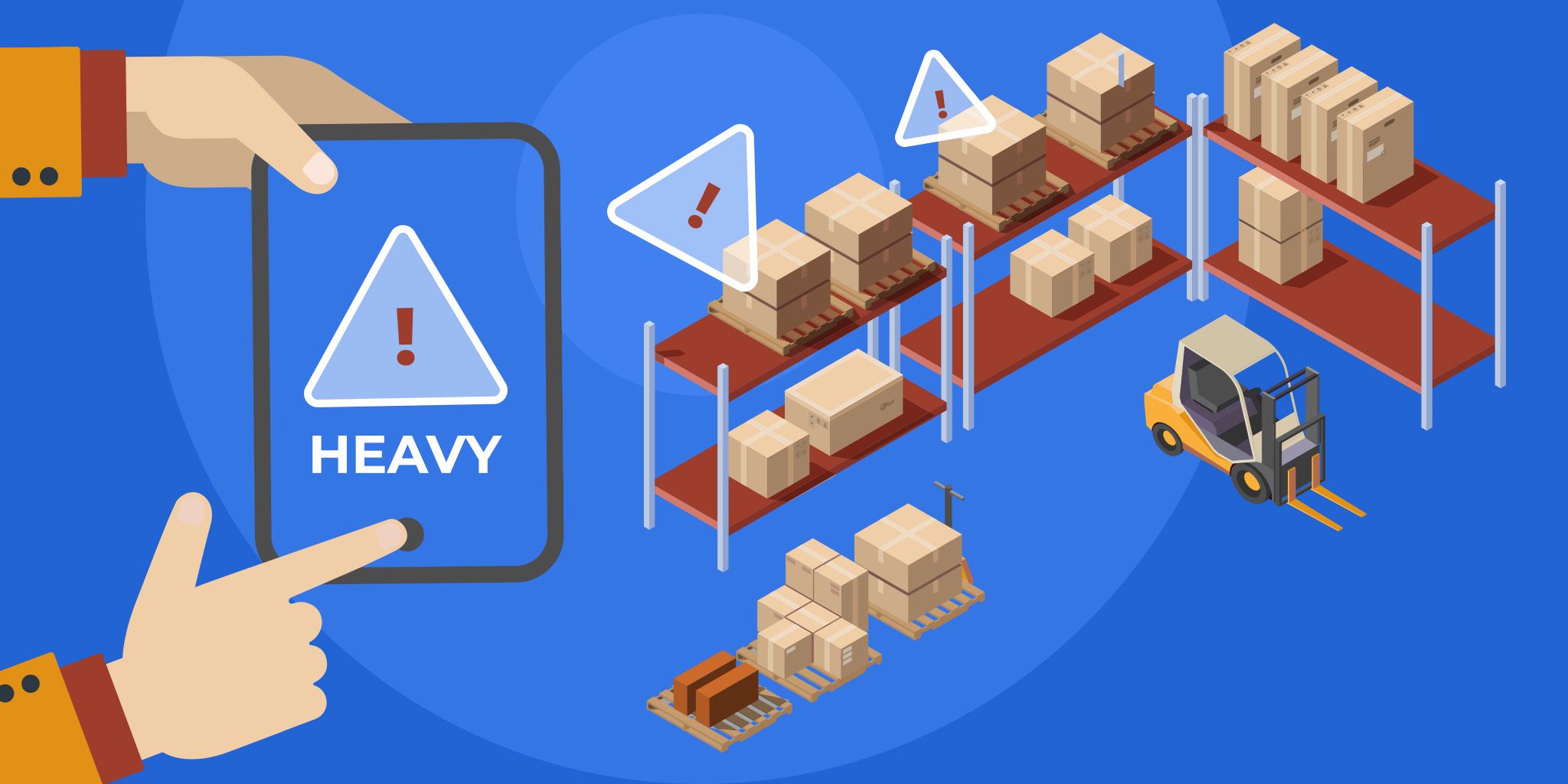Smart Building Sensors: Real Cases Show Major Energy Savings & Cost Cuts
Smart Building Sensors: Real Cases Show Major Energy Savings & Cost Cuts
- Last Updated: July 9, 2025
Milesight
- Last Updated: July 9, 2025



As cities grow fast around the world, buildings are using more and more energy. They use about 40 percent of all global energy and cause around 30 percent of carbon emissions. Because of this, governments are setting stricter rules to protect the environment.
At the same time, more companies are focusing on ESG (Environmental, Social, and Governance) goals. For building owners and managers, going green is no longer just a trend—it’s a smart way to save money and run buildings more efficiently.
To reach carbon-neutral goals, new building technologies are key. Today’s smart buildings use small, wireless sensors to track things like temperature, air quality, how many people are in a room, and how much energy is being used.
Many of these systems use LoRaWAN®—a low-power, wide-range wireless network. The data from these sensors helps building managers make better decisions, reduce energy waste, and create a more comfortable environment for people.
Three Pillars of Smart Building Sustainability
Facility Management: From Passive Maintenance to Intelligent Control
Smart buildings bring automation, precision, and predictability to facility operations. By shifting from reactive maintenance to proactive and data-driven control, this transformation improves facility performance, reduces costs, and supports long-term sustainability. Key applications include:
- Facility Protection & Maintenance: Sensors can spot water leaks right away and shut off valves automatically. This helps avoid costly damage and wasted water.
- Efficient Management: Smart HVAC and lighting systems allow building managers to control many devices from one platform. They can set schedules, adjust settings for different zones, and turn off unused equipment in bulk. This centralized control saves time, improves comfort for people inside, and reduces energy waste.
- Meter Retrofits: Old utility meters can be upgraded to send data wirelessly. Managers can then see how much water, gas, or electricity is used in real time and adjust use to avoid waste.
- Smart Restroom Management: People sensing sensors track when restrooms are busy, so cleaning staff can work more efficiently. Supply sensors alert staff when paper towels or soap need to be refilled, keeping restrooms clean and ready.
Real-world Use Cases:
Montreal Residential Tower: A 38-story building in Montreal had hidden water leaks in many of its 238 units. They installed over 1,200 Milesight sensors, 150+ controllers, and 15 gateways. Leaks are now detected and shut off in 3 seconds, cutting damage and insurance risks. The same setup is now used in over 20 other buildings.
Jacksonville International Airport: The airport used Senzary’s SkySmart system and Milesight sensors to track restroom use and air quality. Cleaning is now based on real usage, saving labor and improving the passenger experience. The system was easy to set up and gave quick results.
Energy Management: Data-Driven Efficiency and Emissions
Saving energy is a big reason why smart buildings are growing. With IoT sensors and AI, buildings can respond to real-time changes in usage and the environment. This helps reduce pollution and energy bills.
- HVAC Management: Smart HVAC systems adjust automatically using temperature and occupancy data. This cuts energy waste by up to 30 percent and supports green building goals.
- Lighting Management: Smart lighting adjusts brightness and timing based on how much sunlight there is or if anyone is in the room. This saves up to 40 percent of lighting energy and keeps people comfortable and safe.
- Energy Monitoring: Wireless sensors track energy use in real time without changing the system setup. Combined with motion, temperature, and humidity sensors, buildings can automatically adjust lights and HVAC to save energy and support carbon goals. Over time, the data collected helps create smarter, data-driven energy strategies, leading to even greater efficiency and long-term savings.
Real-world Use Cases:
Ontario Schools & Offices: Many buildings in Ontario had poor sensor coverage and high costs. Milesight installed 4,400 sensors and 440 gateways across 62 buildings. These tracked temperature, CO₂, and occupancy. Working with Peak Power’s AI platform, they improved air quality and cut energy costs by over $250,000 in just 3 months.
Dubai Office Building: A building in Dubai used to rely on manual work and had high energy bills. They installed smart lighting with 15 controllers, 87 lighting units, and sensors. Lighting use dropped by 25 percent in one month, saving 11,000 hours of light use and about $3,000 per year. The system paid for itself in 2.67 years.
Space Management: Making the Most of Every Square Meter
Smart space management helps buildings use their space better. With the help of sensors and data, managers can see how areas are used and adjust things in real time.
- Environmental Comfort: Sensors check temperature, humidity, and air quality. Some also detect noise and vaping. This data helps improve comfort and health indoors.
- Workspace Management: Real-time occupancy data helps managers assign desks and meeting rooms better. This supports flexible work and avoids wasted space.
- People Caring: Sensors track where people are and how they move. If someone falls or if there’s a fire, alerts are sent right away. This helps with quick response and better safety.
- Smart Restroom Comfort: Sensors show which stalls are free, helping people avoid lines. Odor sensors also check air quality so staff can fix issues quickly.
Real-world Use Cases
Monolithic Office in Barcelona: This office used Milesight sensors to track people and space use. It helped adjust lighting, ventilation, and detect problems fast. Connected with Grafana, it gave a simple view for managers and improved operations.
Ebento Project in Valencia: In 2024’s European Green Capital, smart sensors helped improve living spaces. With indoor air sensors (AM103L) and outdoor CO₂ sensors (EM500-CO2), managers could track air conditions room by room and improve comfort.
People Sensing for Smarter Facility, Energy, and Space Management
You may already benefit from people sensing without knowing it. Sensors that count people or detect motion help buildings work smarter. They adjust lights, temperature, and room availability based on real-time data.
This reduces waste, keeps equipment from overuse, and supports long-term goals like saving energy and cutting carbon.
For users, it means better comfort. Lights come on when you walk in, and meeting rooms are available when needed. It also helps hospitals and banks reduce wait times and improve service.
From Sensing to Savings
At Milesight headquarters, over 350 sensors and 126 AI cameras are installed across a 10,400 m² space. These include desk sensors, meeting room monitors, and people counters. They help control lighting, HVAC, and space use in real time.
This smart setup saved:
- 45 percent annual energy savings through intelligent control of lighting, HVAC, and equipment
- 13 percent decrease in outdoor water usage enabled by optimized irrigation scheduling
- 83 percent increase in employee satisfaction thanks to enhanced comfort and indoor air quality
- Up to 100 percent utilization of meeting and shared spaces via real-time occupancy analytics
It also cut $46,000 in yearly energy costs and helped systems last longer by reducing overuse. Employees now have better access to meeting rooms and workspaces, improving both comfort and productivity.
This case shows how people-sensing technology can help buildings be greener, smarter, and more user-friendly.
From Strategy to Necessity
With climate change and digital growth, smart buildings are no longer just a trend—they’re a real solution. Using IoT sensors, especially those with LoRaWAN®, buildings can now track and improve energy use, comfort, and daily operations.
The latest Frost & Sullivan Frost Radar™ report underscores this momentum, forecasting the global smart building market to exceed $50 billion by 2028 with a CAGR of over 26 percent. The report benchmarks top innovators in smart building sensors across growth and innovation dimensions, offering decision-makers a strategic tool to assess vendor capabilities, identify technology leaders, and inform roadmap planning.
Taken together, all these cases highlight a clear trend: smart buildings, driven by people-sensing IoT technologies, are transforming not just how buildings perform, but how they create value in a connected, data-driven world.
The Most Comprehensive IoT Newsletter for Enterprises
Showcasing the highest-quality content, resources, news, and insights from the world of the Internet of Things. Subscribe to remain informed and up-to-date.
New Podcast Episode

Moving Past the Pilot Phase in IoT and AI
Related Articles



